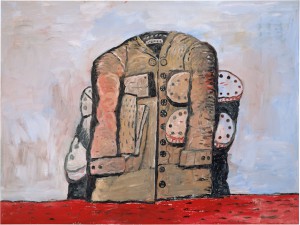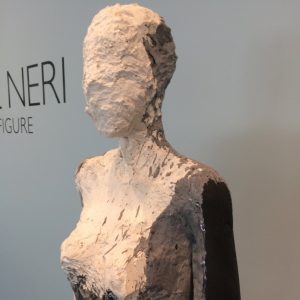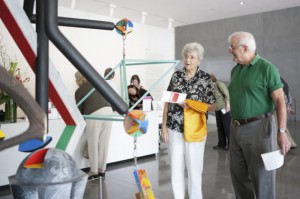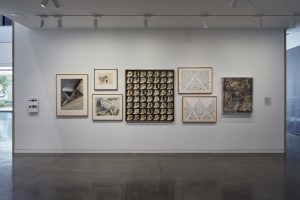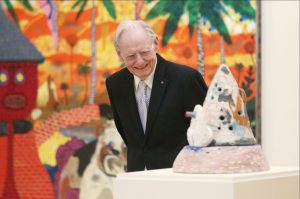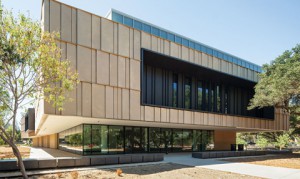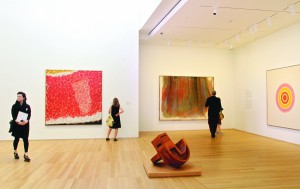Welcome to the Anderson Collection
Stanford University's free museum of modern and contemporary American art
Search Results: ♥💋 Over the counter kamagra flavored, sildenafil citrate, 100mg ↠ ✓♥ www.USPharm.ORG ♥ <. pharmacy link💖📞🦩:50, what happens if a woman takes kamagra oral jelly,kamagra online,is it safe to use kamagra?,kamagra 100mg jelly,kamagra 100mg for sale
Apsáalooke artist Wendy Red Star creatively engages with the Stanford community
…ge with students and the community,” Linetzky said. Lady Columbia John Gast’s 1872 painting American Progress is the namesake and cornerstone for the new works at the Anderson Collection, beginning with a cheeky larger-than-life fabric female figure floating above the museum lobby. In Gast’s painting, an illuminated angel-like figure in diaphanous white known as “Lady Columbia” hovers over an American landscape that includes Native Americans bein…
The Magic of The Anderson Collection
…as “a gift that keeps giving”. There is beauty and generosity in this dedication. May it offer many the joy of having an “art moment”. The Anderson Collection is special for many reasons. The collection is deeply personal. It was assembled by a family, not a museum curator or art consultant. It represents the personal choices and tastes of a family, and a love relationship that spanned over 50 years. They cherished every…
Up Close: One Painting Tours With Artists
…davinasemo.net. You can also follow her on Instagram. Artist Erica Deeman explores Jennifer Bartlett’s At The Lake, Morning Erica Deeman is a visual artist living and working in San Francisco, CA. Originally from the U.K., she has lived in the States for just over 8 years. Deeman’s work explores portraiture and its traditions through the intersections of gender, race, and ethnic identities. Her work has been exhibited nationally and inte…
Anderson Collection’s 10 must-see works at Stanford
Not to be missed at the Anderson Collection (in no particular order): 1. Richard Diebenkorn: “Berkeley No. 26,” 1954. 2. Frank Stella: “Zeltweg,” 1981. 3. Ellsworth Kelly: “Black Ripe,” 1955. 4. David Park: “Four Women,” 1959 (on the cover). 5. Jackson Pollock: “Lucifer,” 1947. 6. Morris Louis: “Number 64,” 1958. 7. Wayne Thiebaud: “Candy Counter,” 1962. 8. Mark Rothko: “Pink and White Over Red,” 1957. 9. Vija Celmins: “Barrier,” 1986. 10. Phili…
Manuel Neri’s Chromatic Chaos
…including wire, cardboard, wood, and scraps of his army fatigues. Installation view of Manuel Neri Assertion of the Figure with “Untitled Female Figure” (l.) and Untitled Male Figure, (both c. 1958) (photo by the author for Hyperallergic) In the years that followed, plaster figures built over metal armatures became Neri’s trademark. The earliest works in Assertion of the Figure are an “Untitled” 1958 male/female duo in painted plaster that have…
The Anderson Collection at Stanford University is a feast with all the trimmings
One of HUNK ANDERSON’s favorite observations about the remarkable artwork that once hung in his dining room, including Jackson Pollock’s Lucifer and Willem de Kooning’s Woman Standing – Pink, among others, is that one could enjoy a feast in the room without ever having a meal, thanks to the rich visual display. The feast proved moveable and equally rich when the paintings were relocated to the campus over the summer and served to the Stanford co…
‘The Anderson Collection’ opens at Stanford
Lucifer has risen at Stanford University. That is, Lucifer, the celebrated 1947 Jackson Pollock painting now hangs against a white background. It sits opposite Mark Rothko’s Pink and White Over Red, completed 10 years later. Both together constitute just two of 121 works by 86 artists in the Anderson Collection at Stanford, located in a brand new building just north of the Iris & B. Gerald Cantor Center for Visual Arts. Designed by Ric…
Anderson Collection a modern art trove not to be missed
…of art,” says Linetzky. “And this was just eye-opening to Hunk and Moo.” With tutelage from Elsen and Oliveira, the Andersons turned their attention to the New York School, or Abstract Expressionism. Oliveira also introduced them to his fellow contemporary California artists, whose works the Andersons have collected in depth. Over the years, the couple read books, visited museums and galleries, and developed relationships with collectors, curato…
The Museum of Hunk, Moo & Putter: The Anderson Collection at Stanford will Rock You
…son Pence (“Putter”) could have led post-World War Two lives of suburban white privilege and comfort – thanks to the financial success of the Saga food service company Hunk co-founded that supplied many colleges (including Stanford) and for which they moved from the East Coast to the West. However, in the early 1960s, before their daughter was born, the Andersons traveled to Paris and had a life-changing visit to the Louvre. ‘Something came over…
Happy 100th Birthday, Wayne Thiebaud!
…weet tooth! Wayne Thiebaud is well known for his images of food, ranging from lollipops to display cakes. During the early 1960s, he was identified with Pop Art—a connection he was quick to disclaim. Yet his own background in commercial art affect the way he handled subject matter. In Candy Counter, he heightens the intensity of the color so that orange and green candies seem to vibrate with an improbable brightness, suggesting the chromatic enha…
Ceremonial turning of the soil delights the Anderson family and guests
…vost John Etchemendy told the guests, “It is almost impossible to describe the profound effect the gift of their remarkable collection will have on Stanford, on our students and on all who appreciate American art. But this afternoon, we are certainly going to try.” The Anderson Collection is one of the largest and most outstanding private collections of post-World War II American art in the world. The collection has been built over th…
Full House
…by Richard Olcott of Ennead Architects, on the Stanford campus. “They consider themselves custodians of the work they collect,” says Jason Linetzky, the director of the Anderson Collection at Stanford. But, he adds, “they’re very down-to-earth and casual about how they live with the art.” A Renoir was moved from Putter’s room to make way for the Pollock. In the living room, Sam Francis’s 1955 Red in Red has pride of place above the fireplace; o…
The Collection of a Lifetime
…d more than 80 of his paintings, drawings and prints between 1969 and 1990, of which three paintings are part of their gift to Stanford. (The others are Ocean Park #60 and Girl on the Beach.) Active in the Bay Area Figuration movement, the artist moved from abstraction to figuration and back to abstraction over the course of his career. David Park Courtesy of Hackett/Mill, Representative of the Estate of David Park A pioneer of the 1950s Bay Area…
Pollock’s stellar ‘Lucifer’ and impressive Anderson Collection
For the past 44 years, a pivotal painting in the evolution of American Modern art in the exhausted aftermath of World War II has hung in a private home in an affluent San Francisco suburb — first in a child’s bedroom and then over a dining room credenza. Jackson Pollock’s “Lucifer” (1947) is the canvas in which the artist’s tentative experiments with a revolutionary new way of painting first took flight. Now the pa…
Stanford unveils the Anderson Collection: New museum dedicated to renowned works of American art
…ght fit. Imagine having an Alexander Calder mobile in your living room, a Hans Hoffman color-saturated landscape over your bed. Now, a portion of the Andersons’ blue-chip collection has a new and spacious home on the Stanford campus: a beautiful bespoke museum designed to showcase the Modern and contemporary American paintings and sculptures the couple has so carefully acquired over the last 50 years. Richard Olcott of Ennead Architects des…
Palette Cleanser: A new campus museum quietly serves up a visual banquet
…1; Advertising —– Harry W. “Hunk” and Mary Margaret “Moo” Anderson, who have art in every corner of their ranch house near San Francisco, including an Ed Ruscha over the fridge, wanted the public to have that kind of immediate relationship with these masterworks. When they decided to donate a significant portion of their collection, they worked out a deal with Stanford to house it in a stand-alone building, aiming to recreate their o…



